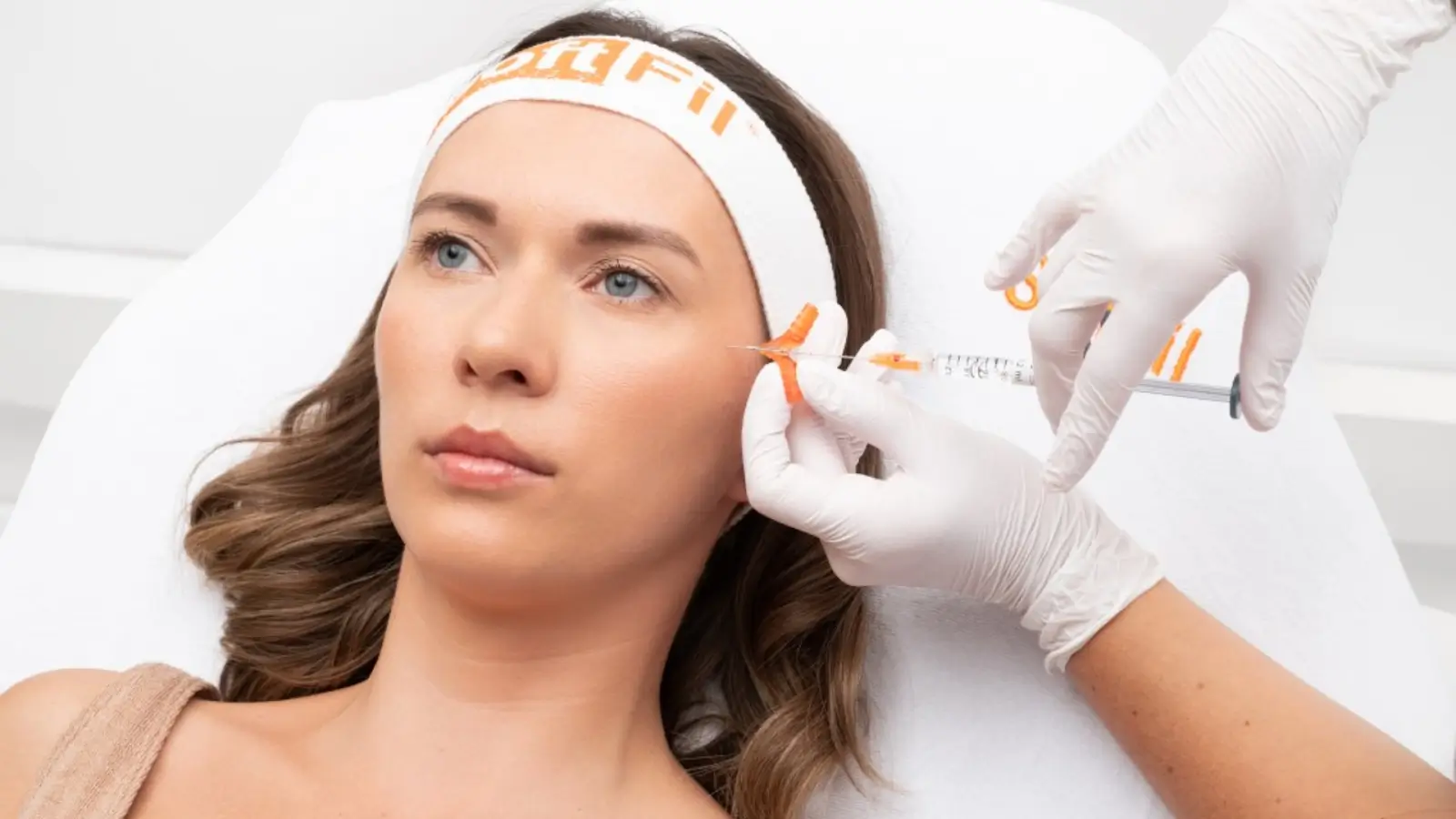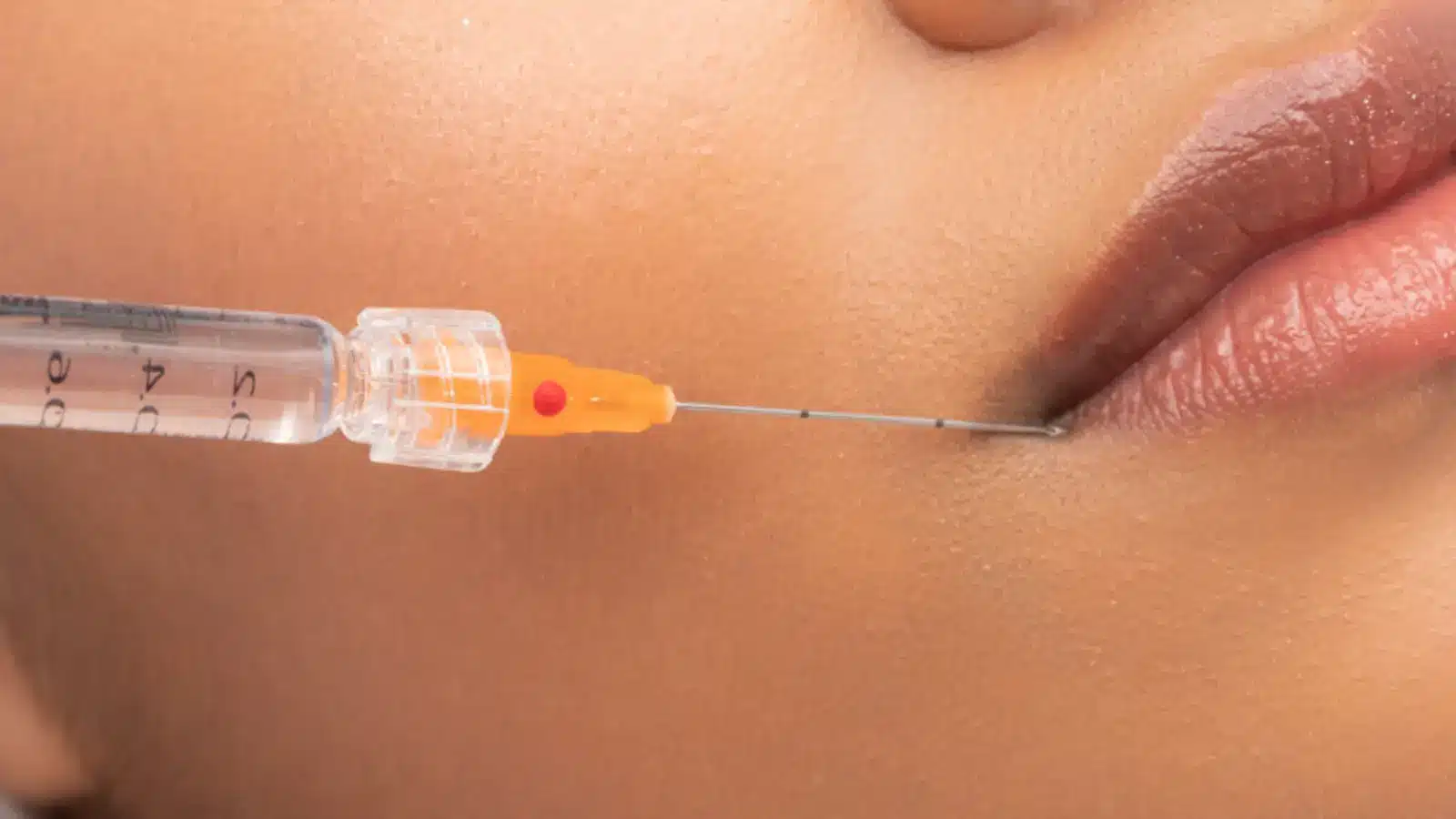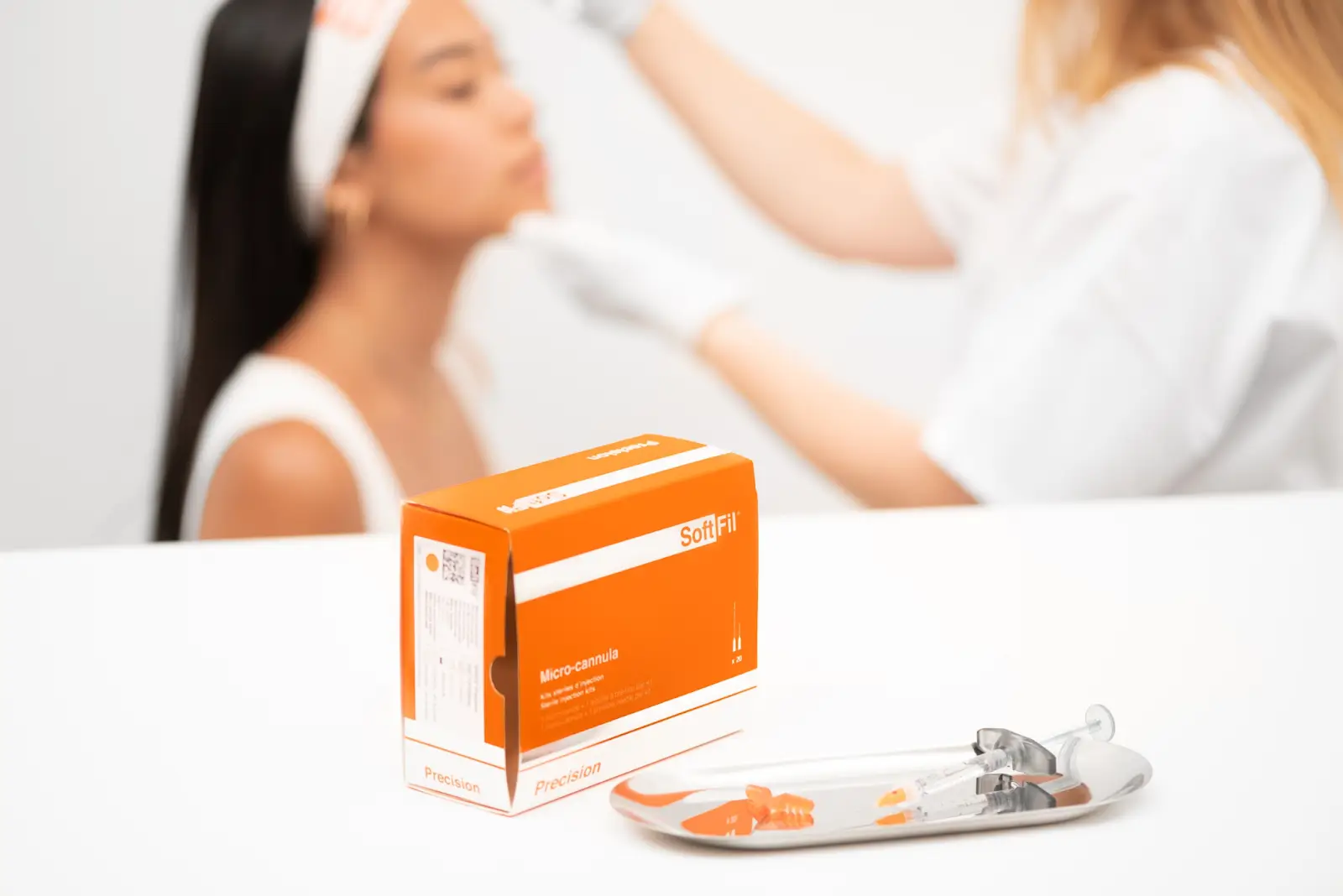
The growing demand for dermal fillers has led to advancements in injection techniques and devices, improving patient comfort and treatment precision. Compared to traditional needles, blunt-tip microcannulas significantly reduce bruising and swelling, offering a safer and more comfortable experience for patients.
SoftFil Precision is a leading range of microcannulas designed specifically for dermal filler injections. Known for their flexibility, precise design, and varying sizes, these microcannulas enable practitioners to achieve smoother, more natural-looking results while minimizing trauma to the skin and underlying tissues.
This article will explore the SoftFil Precision technique, its benefits, applications, and why it has become a game-changer in advanced dermal filler treatments.
Key Takeaways
- SoftFil Precision microcannulas offer an advanced, precise method for administering dermal fillers, reducing trauma and improving patient comfort.
- The technique uses a blunt-tip cannula that minimizes risks like vascular occlusion, ensuring safer treatments, particularly in delicate areas such as the lips, cheeks, and tear troughs.
- Proper training and certification, like those offered by SoftFil Academy, are crucial for practitioners to master the technique and achieve optimal results.
- The SoftFil Precision method allows for fewer injection points, leading to a smoother patient experience and faster recovery times.
About: Doctor Medica is your trusted supplier of top-quality dermal fillers, viscosupplements, and more for your medical practice. We offer genuine products from leading brands at the lowest prices. Contact Doctor Medica today to order SoftFil Cannulas online for your practice.
Understanding the SoftFil Precision Technique

The SoftFil Precision microcannula represents a cutting-edge advancement in dermal filler application. Unlike traditional needles, this state-of-the-art tool is specifically designed to enhance precision and control during treatments. Its innovative construction allows dermal fillers to be placed in the optimal layer of the skin, ensuring even product distribution for seamless, natural results.
A standout feature of the SoftFil Precision technique is its ability to deliver consistent outcomes across various treatment areas. The microcannula’s design ensures the filler integrates smoothly with the surrounding tissue, avoiding lumps or irregularities. This capability makes it particularly effective for achieving balanced enhancements in areas requiring precision, such as the lips, tear troughs, and cheeks.
Moreover, the technique’s flexibility offers practitioners more control, enabling them to customize treatments to the unique contours of each patient’s face. This adaptability ensures that the results are not only natural-looking but also tailored to the patient’s specific aesthetic goals.
Advantages of SoftFil Precision Technique in Dermal Fillers

One of its primary benefits is the enhanced precision it delivers in delicate areas. The flexibility and blunt tip of the SoftFil Precision microcannula allow practitioners to navigate sensitive regions like the under-eyes, lips, and nasolabial folds with minimal trauma. By creating a single entry point, the technique ensures accurate product placement while reducing the risk of irregularities or overcorrection, resulting in smooth, natural-looking outcomes.
Patient comfort is another standout feature of this technique. Traditional needles often require multiple injection points, leading to greater discomfort and an increased likelihood of bruising. In contrast, the SoftFil Precision microcannula glides gently through the subcutaneous layers, minimizing pain during the procedure. With fewer entry points, patients experience less swelling and faster recovery times, making it a preferred option for those seeking non-surgical enhancements.
Perhaps most importantly, using SoftFil with fillers reduces the risk of complications. The blunt tip of the microcannula is designed to avoid piercing blood vessels, significantly lowering the chances of hematomas or vascular occlusions. This safety feature is particularly valuable when treating high-risk areas, such as the tear troughs or nasolabial folds, where sharp needles might otherwise pose a greater risk.
Incorporating SoftFil Precision Technique into Practice

To integrate the SoftFil Precision technique successfully into your practice, proper training and certification are essential. SoftFil Academy provides a variety of educational resources, including online courses, webinars, and in-depth tutorials, catering to both beginner and advanced practitioners. These training programs equip medical professionals with the skills needed to master microcannula techniques, prioritize patient safety, and deliver exceptional results.
Patient selection plays a pivotal role in the success of any dermal filler treatment. During consultations, it’s important to thoroughly discuss the patient’s aesthetic goals, medical history, and prior cosmetic procedures. Educate patients about the benefits and potential risks associated with the SoftFil Precision technique, ensuring they clearly understand what to expect.
Setting realistic expectations is key to achieving patient satisfaction. Additionally, taking detailed photographs and measurements before treatment helps in planning and provides a baseline for evaluating progress over time.
Step-by-Step Guide to Performing Dermal Fillers Using the SoftFil Precision Technique
- Preparation: Prepare the treatment area and ensure all necessary equipment is sterile. This includes the SoftFil Precision microcannula, syringes, and the chosen dermal filler.
- Anesthesia: Apply a topical anesthetic to the treatment area to minimize discomfort.
- Insertion: Use a pre-hole needle to create an entry point, then gently insert the blunt-tip microcannula under the skin.
- Tunneling: Use the tunneling technique to inject the filler along the desired path, ensuring even distribution and avoiding blood vessels.
- Adjustment: Adjust the depth and direction of the cannula as needed to achieve the desired results.
- Post-Injection Care: After the injection, apply pressure to the treated area to reduce swelling and bruising. Provide the patient with aftercare instructions and schedule a follow-up appointment to monitor the results.
Conclusion
The SoftFil Precision technique has become a game-changer for dermal fillers, offering a safer, more comfortable, and more precise alternative to traditional injection methods. By utilizing state-of-the-art microcannulas, this approach ensures optimal filler placement while minimizing risks and recovery time. For practitioners, mastering the SoftFil Precision technique represents an opportunity to deliver superior results and enhance patient satisfaction.
Incorporating this advanced method into an aesthetic practice requires proper training, thorough patient consultations, and adherence to best practices. By prioritizing safety, precision, and individualized care, the SoftFil Precision technique sets a new standard in non-surgical aesthetic treatments.
FAQs
1. What is the SoftFil Precision microcannula?
The SoftFil Precision microcannula is a blunt-tip injection device designed for precise, safe, and minimally invasive dermal filler treatments.
2. How is the SoftFil Precision technique different from traditional needle injections?
Unlike sharp needles, the SoftFil microcannula uses a blunt tip that minimizes trauma, reduces the risk of vascular complications, and requires fewer injection points for a smoother treatment experience.
3. What areas can be treated with the SoftFil Precision technique?
The technique is ideal for sensitive areas such as the tear troughs, nasolabial folds, lips, and cheeks, providing natural-looking results with reduced risks.
4. Do practitioners need special training to use SoftFil Precision microcannulas?
Yes, proper training and certification, such as those offered by SoftFil Academy, are essential for practitioners to ensure safe and effective treatments.
References
Sundaram H, Weinkle S, Pozner J, Dewandre L. Blunt-tipped microcannulas for the injection of soft tissue fillers: a consensus panel assessment and recommendations. J Drugs Dermatol. 2012;11(8):s33-s39.
Ugradar S, Hoenig J. Measurement of the force required by Blunt-Tipped microcannulas to perforate the facial artery. Ophthalmic Plastic and Reconstructive Surgery. 2019;35(5):444-446. doi:10.1097/iop.0000000000001302
Related Articles
Joanna Carr
Nonsurgical Nose Treatments: Fixing Imperfections With Restylane
Interested in learning more about Fixing Imperfections With Restylane Non-Surgical Nose Treatments? Browse Doctor Medica's comprehensive archive of bl...
Joanna Carr
Nabota Side Effects – A Comprehensive List
Nabota is a botulinum toxin type A used for both medical and cosmetic treatments, effectively managing conditions like muscle stiffness, chronic migra...
Joanna Carr
Refer to Doctor Medica and Earn
Have an interest in learning about Referring Others to Doctor Medica and Earning Back? Browse Doctor Medica's extensive archive of blog postings.


